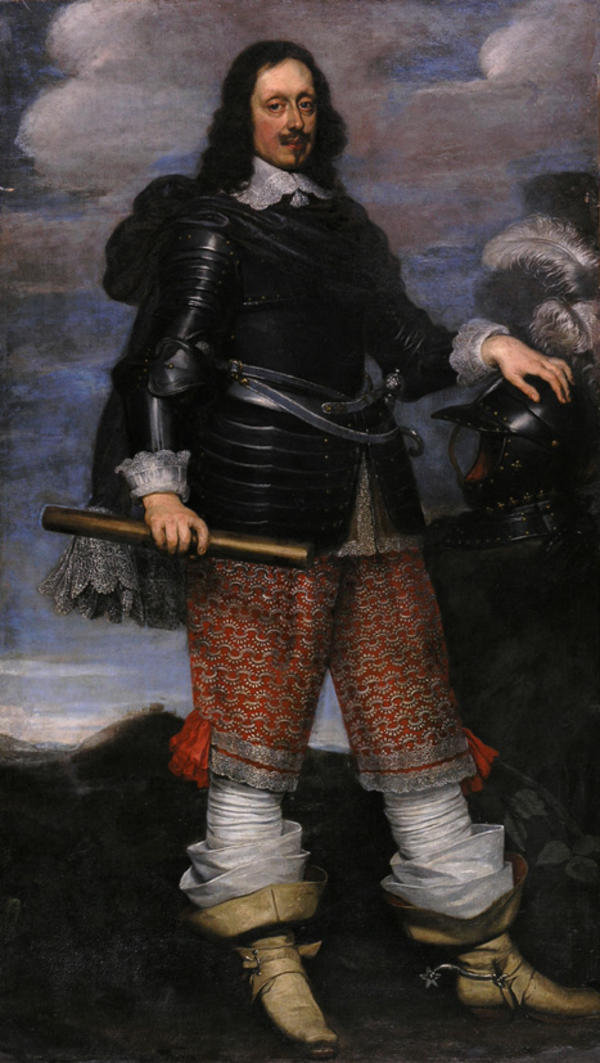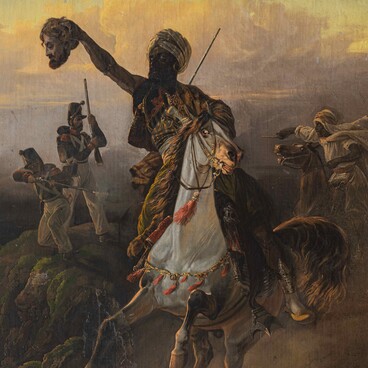The Flemish Baroque painter Justus Sustermans started to learn painting at an early age. There is no reliable information about his youth, but historians suggest that he spent some time in Paris, perfecting his painting skills. During his formative years, he was greatly influenced by Velázquez and Guercino, as well as by the Venetian school of painting in general.
In the early 1920s, the artist moved to Florence, the seat of the Medici, Grand Dukes of Tuscany. He was appointed court painter there. The artist traveled extensively around the country, studying the works of the great masters. Sustermans gained popularity through his numerous portraits of Galileo Galilei, the Italian and Austrian aristocracy and, most importantly, the Medici family.
Tuscany was ruled by a dynasty of wealthy Florentine merchants from the middle of the 15th century. Ferdinand II de’ Medici, depicted in Sustermans’ painting, inherited the throne after his father’s death, but because of his young age, for the first seven years of Ferdinand’s reign power was concentrated in the hands of his mother, Archduchess Maria Magdalena of Austria. Ferdinand, like all the Medici, was a patron of arts and sciences. Among his subjects he was popular for a series of financial assistance measures: he cut his private expenditures and granted loans to those who were in great need because of the plague that was raging at the time.
During his lifetime, Sustermans was considered the leading portrait painter in Italy, equal to Rubens and van Dyck. As time passed, the painter’s fame somewhat faded. Nevertheless, his works are housed in many European museums and private collections.
In the early 1920s, the artist moved to Florence, the seat of the Medici, Grand Dukes of Tuscany. He was appointed court painter there. The artist traveled extensively around the country, studying the works of the great masters. Sustermans gained popularity through his numerous portraits of Galileo Galilei, the Italian and Austrian aristocracy and, most importantly, the Medici family.
Tuscany was ruled by a dynasty of wealthy Florentine merchants from the middle of the 15th century. Ferdinand II de’ Medici, depicted in Sustermans’ painting, inherited the throne after his father’s death, but because of his young age, for the first seven years of Ferdinand’s reign power was concentrated in the hands of his mother, Archduchess Maria Magdalena of Austria. Ferdinand, like all the Medici, was a patron of arts and sciences. Among his subjects he was popular for a series of financial assistance measures: he cut his private expenditures and granted loans to those who were in great need because of the plague that was raging at the time.
The portrait shows Ferdinand standing in full height, his right hand holding the staff of a military commander. His left hand rests on his Burginot helmet, also known as the “dead head”. Bright spots of color and harsh clear lines of the fashionable costume are typical of Sustermans’ works. His works are often distinguished by their high execution technique and variety. The palette is brilliant and the composition is carefully thought out. However, over the years his style changes: the colors become darker, the brushstrokes are broken and less even.
During his lifetime, Sustermans was considered the leading portrait painter in Italy, equal to Rubens and van Dyck. As time passed, the painter’s fame somewhat faded. Nevertheless, his works are housed in many European museums and private collections.



